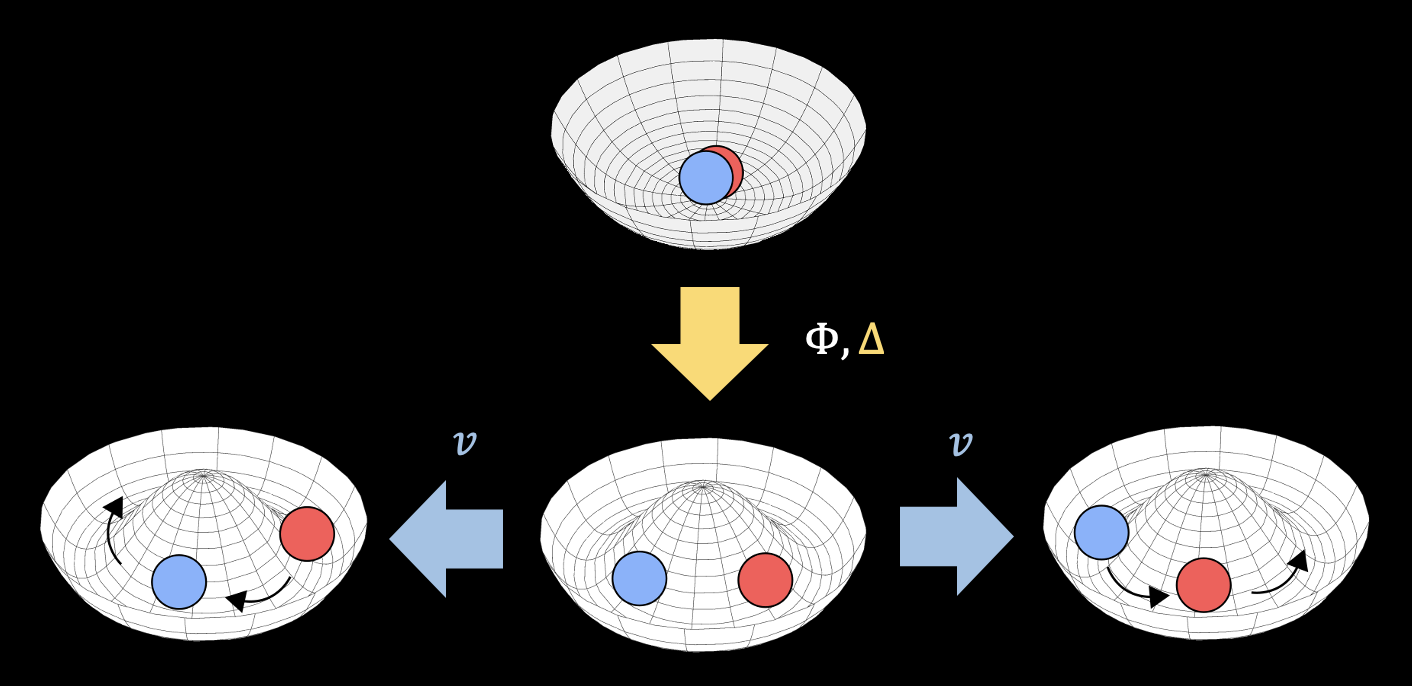- with Xiaoyang Huang, Isabella Zane, Aaron Friedman, Paolo Glorioso, and Prof. Andy Lucas
The Wilsonian paradigm of organizing phases of matter by the symmetries they obey (and break!) is a central tool for understanding equilibrium statistical physics. Can such a program exist for nonequilibrium systems as well? In Farrell, Huang, et al. (2023), we introduce an effective theory framework for dissipative classical systems both in and out of equilibrium, which describes stochastic dynamics in the presence of a thermal bath as well as nonthermal active matter. Rather than simply guessing stochastic equations, we derive them carefully based on symmetry principles. The most important symmetry is a generalized time-reversal symmetry, which is sensible even for active matter. Our formalism streamlines derivations of dissipative thermal dynamics such as Landau-Lifshitz-Gilbert spin dynamics or frictional rigid body rotation, and more importantly, it generates effective theories for active matter: non-reciprocal matter with predator-prey dynamics, active fluids and solids, and active phase separation. We hope that this approach facilitates a systematic investigation of the universality classes of active matter, and provides a common language for nonequilibrium many-body physics from high energy to condensed matter!
The figure shows how stationary thermal phases of matter and dynamic “active” phases of matter are controlled with different parameters inside our formalism.
